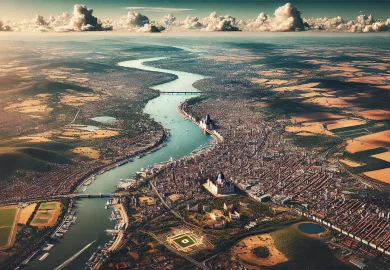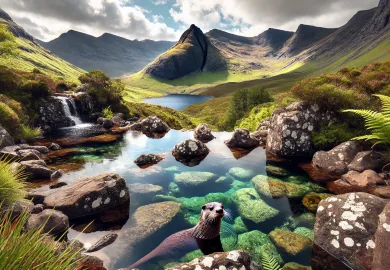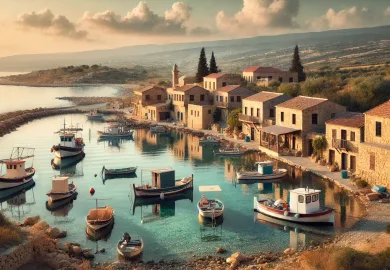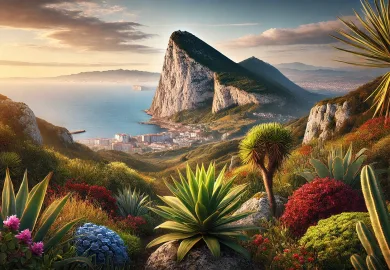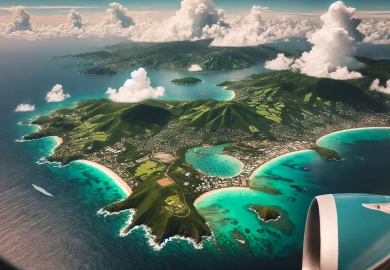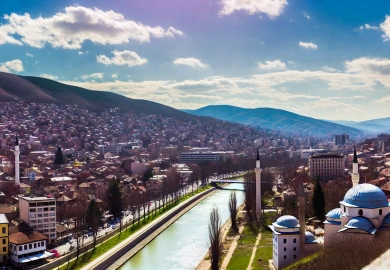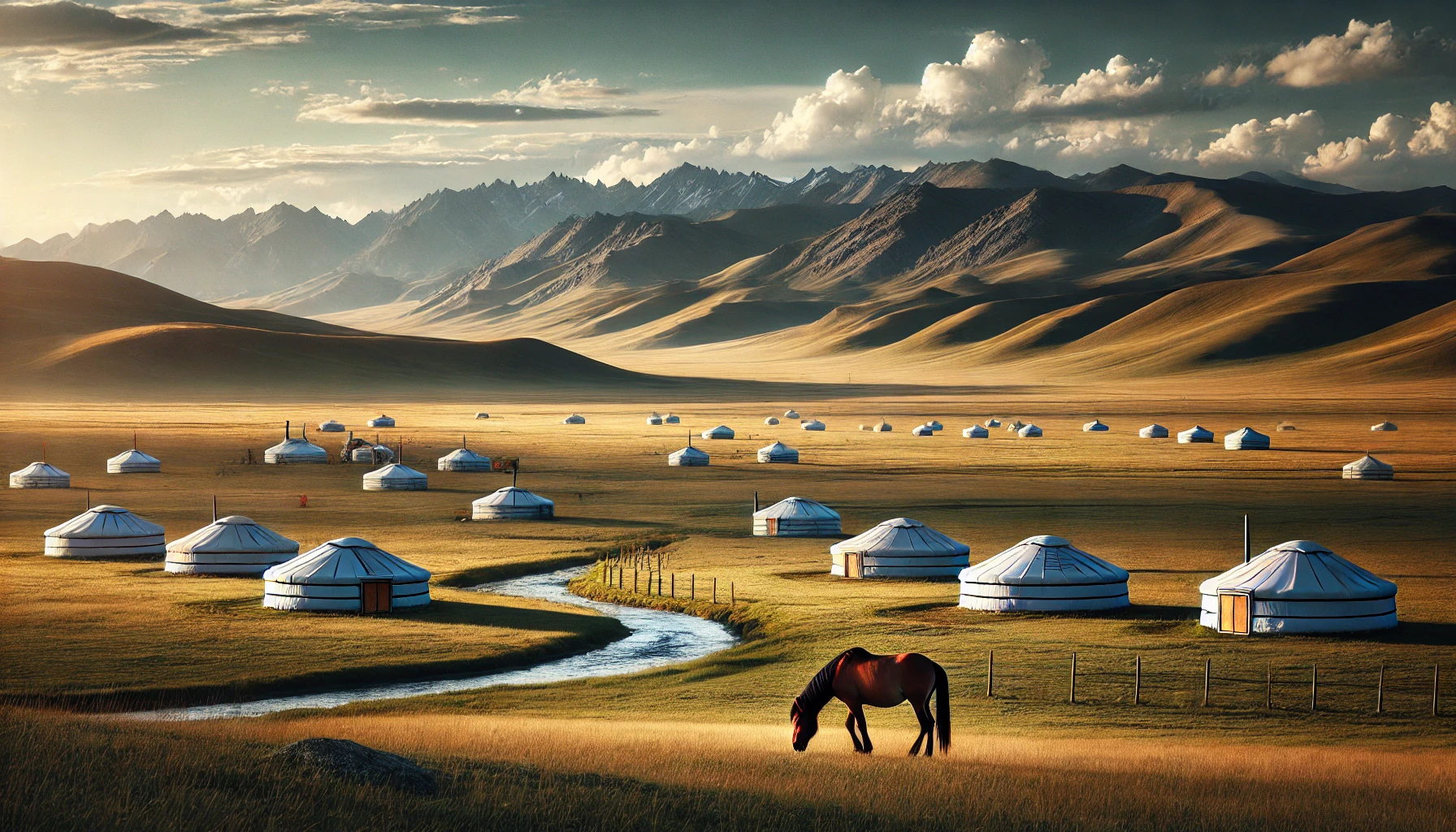
Mongolia is a land of vast wilderness, untouched natural beauty, and a unique blend of ancient culture and nomadic traditions. For those looking to step off the beaten path, Mongolia offers a wealth of unseen places that remain largely undiscovered by tourists. In this guide, we will take you on a journey to some of the most remote and breathtaking locations that will ignite your adventurous spirit. Explore hidden lakes, mysterious valleys, and the wide-open steppes where time seems to stand still.
1. Journey into the Mystical Orkhon Valley
Tucked away in central Mongolia, Orkhon Valley is a UNESCO World Heritage site that is often overlooked by travelers, despite its historical and cultural significance. The valley is home to ancient monuments, petroglyphs, and the ruins of Khar Balgas, once the capital of the Uighur Empire. The Orkhon River cuts through the valley, surrounded by sweeping plains and snow-capped mountains.
Visitors can experience the true spirit of Mongolia’s nomadic culture by staying with local families in traditional gers (yurts). This offers a rare opportunity to witness herding and other traditional practices that have remained unchanged for centuries. The tranquil beauty of the Orkhon Valley makes it an ideal place for horseback riding, hiking, and simply soaking in the peaceful ambiance of the Mongolian countryside.
Orkhon Valley’s rich history, combined with its natural beauty, creates a magical atmosphere. It’s a place where you can almost hear the echoes of ancient empires while standing amidst untouched landscapes that are still largely free from tourism.
2. The Remote Beauty of Khuisiin Naiman Nuur (Eight Lakes)
Nestled deep in the Khangai Mountains, Khuisiin Naiman Nuur, also known as the Eight Lakes, is a pristine, remote destination that remains relatively unknown even to seasoned travelers. This hidden gem comprises eight freshwater lakes scattered across the volcanic landscapes, surrounded by thick forests and rocky cliffs. The lakes are connected by underground channels, which create a unique ecosystem teeming with wildlife.
Exploring Khuisiin Naiman Nuur requires a multi-day trek on foot or horseback, offering a true wilderness adventure. The area is perfect for those who enjoy camping under the stars, as well as birdwatching, with various species of eagles and falcons calling the region home. The clear, blue waters of the lakes provide an ideal spot for fishing, or you can simply sit on the shore and absorb the sheer beauty of this remote paradise.
Due to its isolation, Khuisiin Naiman Nuur offers a peaceful escape from the crowds, making it a great destination for nature lovers seeking solitude and an authentic Mongolian wilderness experience.
3. The Mysterious Sands of Khongoryn Els
Located in the Gobi Desert, Khongoryn Els, or the Singing Dunes, is one of the largest and most spectacular sand dunes in Mongolia. Despite their stunning beauty, these dunes are often bypassed by tourists in favor of more popular destinations in the desert. Stretching over 100 kilometers, the dunes reach heights of up to 300 meters and produce a deep humming sound when the wind blows across their surface, giving them the name “Singing Dunes.”
Exploring Khongoryn Els offers a surreal experience. You can climb to the top of the towering dunes and take in panoramic views of the desert, where the vastness of the landscape creates a sense of awe. At sunset, the dunes glow in shades of gold and orange, casting long shadows that create a mesmerizing scene.
Visitors can also experience the local camel herding culture, with opportunities to ride camels through the desert and spend time with nomadic families who have lived in the region for generations. The contrast between the barren desert and the vibrant nomadic way of life makes Khongoryn Els a truly unique destination.
4. The Hidden Valleys of Altai Tavan Bogd National Park
Altai Tavan Bogd National Park is one of Mongolia’s most remote and rugged regions, located in the far west near the border with Russia and China. The park is home to the Altai Mountains, a range of towering peaks, glaciers, and alpine lakes that form some of the most dramatic landscapes in the country. The park’s most famous peak, Mount Khüiten, is the highest point in Mongolia and is a popular destination for mountaineers.
One of the park’s best-kept secrets is its hidden valleys, where time seems to stand still. Here, ancient petroglyphs, burial mounds, and stone monuments are scattered across the landscape, offering glimpses into the region’s ancient history. The valleys are also home to Kazakh nomads, who practice eagle hunting, an age-old tradition that is still alive today. Visitors can witness this incredible display of skill and culture by joining an eagle hunting expedition.
For those seeking solitude and adventure, the hidden valleys of Altai Tavan Bogd offer endless opportunities for trekking, climbing, and wildlife spotting. You may encounter rare species such as the snow leopard, ibex, and Argali sheep, making it a dream destination for nature enthusiasts and photographers alike.
From the mystical Orkhon Valley to the remote Khuisiin Naiman Nuur, the singing dunes of Khongoryn Els, and the hidden valleys of Altai Tavan Bogd, Mongolia is a country full of unseen wonders waiting to be explored. These lesser-known destinations offer a chance to experience the raw, untamed beauty of the Mongolian wilderness while immersing yourself in a culture that has remained unchanged for centuries. Whether you’re seeking adventure, solitude, or a deeper connection with nature, these hidden gems will leave you with memories to last a lifetime.

